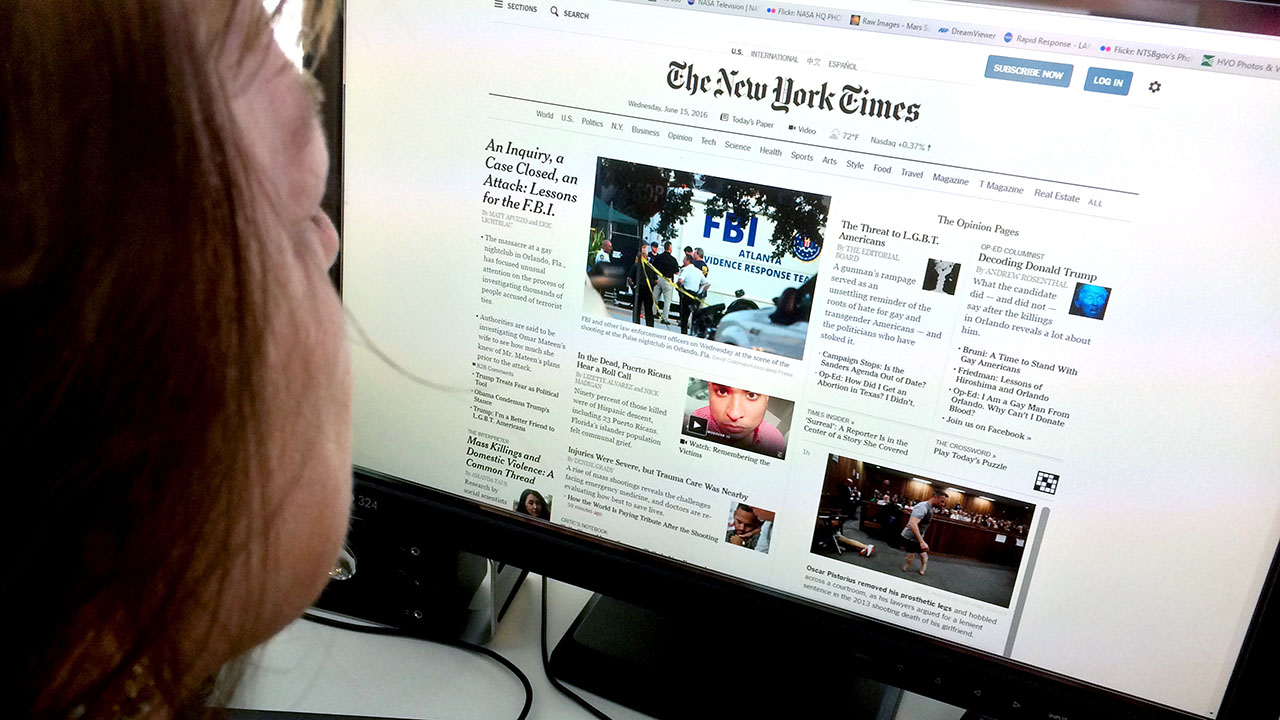The Evolution of Journalism in the Age of Information Online
In the rapidly transforming landscape of journalism, the digital age has actually ushered in a brand-new period where the immediacy of on the internet news reshapes both its production and usage. As electronic platforms multiply, they boost interactivity and expand the reach of journalism, yet simultaneously test traditional norms with the speedy spread of information and false information alike. The rise of resident reporters and independent voices further makes complex the story, adding to a vivid yet precarious media ecological community. As we navigate these intricacies, one should question the future of journalistic stability and just how it can be protected among these transformative changes.

Increase of Digital Information Platforms
The surge of digital information platforms has actually fundamentally changed the landscape of journalism, marking a change from traditional print media to vibrant, online rooms. This development was thrust by innovations in innovation and the raising ease of access of the net, which enabled information to be distributed swiftly and broadly. Unlike their print equivalents, electronic platforms can instantaneously update material, giving real-time news insurance coverage and analysis that allures to the modern visitor's need for immediacy and relevance.
Digital systems have actually also broadened the extent of journalism, enabling a diversification of perspectives and voices. With lower obstacles to access, independent journalists and smaller information companies can reach worldwide target markets, testing the syndicate as soon as held by established media conglomerates. This democratization of news has enhanced the general public discussion, supplying differed stories and dealing with niche interests that were previously underserved.
Furthermore, the combination of multimedia aspects such as video, audio, and interactive graphics enhances storytelling, making news much more easily accessible and interesting (dw news). This multimedia approach not only brings in a more comprehensive target market but also help in the comprehension of intricate stories. In essence, digital systems have actually redefined journalism, promoting technology and versatility in an ever-evolving media environment

Impact of Social Media
Social media site platforms have actually even more changed journalism by modifying how information is eaten and shared. These systems have democratized news dissemination, enabling anyone with internet accessibility to report occasions in real-time. This immediacy has actually put standard news outlets in a race to maintain, compelling them to take on much faster reporting approaches. Furthermore, social networks has expanded audiences, granting reporters accessibility to worldwide viewership beyond geographical constraints.

The interactive nature of social media sites promotes engagement, allowing target markets to take part in discussions, share opinions, and add to news narratives. This communication improves the dynamic in between reporters and their audiences, advertising a much more participatory form of journalism. However, this likewise places tremendous pressure on reporters to create content that reverberates with audiences, usually focusing on sensationalism to catch attention.
Furthermore, social media systems have actually ended up being essential tools for journalists to resource stories, determine public viewpoint, and network with sector peers. The dependence on social media likewise demands a crucial assessment of resources to make sure the credibility of info shared.
Difficulties of False Information
In the middle of the digital change of journalism, one significant obstacle is the pervasive spread of misinformation. In a period where information is swiftly accessible and plentiful, comparing reliable information and made material has actually become significantly hard. The large quantity of details shared across various on the internet systems commonly obscures the line in between truth and fiction, posturing a substantial risk to the integrity of journalism.
False information can spread out quickly with social networks, where algorithms focus on interaction over accuracy, inadvertently intensifying incorrect narratives (dw news). This not just weakens public count on media institutions yet likewise fosters an environment where misleading material can affect useful reference popular opinion and decision-making procedures. The difficulty for reporters is twofold: to unmask falsehoods successfully and to support rigorous requirements of fact-checking and verification
More complicating this issue is the visibility of deepfakes and sophisticated disinformation campaigns that utilize advanced modern technologies to produce deceptive material tantamount from legit coverage. As these innovations advance, so should the approaches and tools used by journalists to fight them. Addressing misinformation calls for collaboration in between media organizations, innovation firms, and policymakers to develop detailed approaches that protect the credibility of information in the digital age.
Function of Person Journalists
Navigating the landscape of false information highlights the transformative impact of resident reporters within the electronic realm. As conventional media electrical outlets face the sheer speed and volume of information circulation online, citizen journalists-- normal people armed with mobile phones and accessibility to social media visit site sites-- are playing an increasingly essential duty. These grassroots contributors have ended up being critical in covering occasions promptly, often offering real-time updates from the ground before mainstream media can react.
Resident reporters have equalized information coverage, magnifying voices that could or else continue to be unheard. By leveraging systems like Twitter, Facebook, and Instagram, they supply diverse perspectives that challenge the narratives frequently pushed by established media.
Nevertheless, person journalism is improving the media landscape, engaging standard outlets to adapt by integrating user-generated web content right into their reporting. By fostering community engagement and motivating participatory journalism, these digital storytellers contribute to an extra inclusive and vibrant information environment. As resident journalists remain to progress, their function in shaping public discourse continues to be an important part of contemporary journalism.

Future of Journalistic Stability
The spreading of electronic platforms has actually equalized information circulation, allowing a wider array of voices to contribute to the information landscape. This has also led to visit the website the spread of false information and the erosion of trust fund in media.
The rise of artificial knowledge and algorithm-driven content curation additionally complicates the landscape. While AI can improve reporting by examining large datasets and recognizing trends, it additionally positions threats of bias and adjustment. Journalists need to for that reason remain alert, ensuring that modern technology acts as a device for truth instead than distortion.
In addition, the economic pressures on traditional media electrical outlets require innovative organization designs to sustain top quality journalism. Subscription-based designs, not-for-profit financing, and partnerships with technology companies are becoming prospective solutions. Yet, they need to be pursued without endangering editorial freedom.
Eventually, the future of journalistic integrity depends upon the commitment of reporters and media companies to copyright openness, accountability, and an unfaltering dedication to reality, among a quickly transforming digital globe.
Conclusion
The development of journalism in the electronic age provides both possibilities and difficulties. The increase of electronic news systems and social media has equalized information dissemination, equipping a varied range of voices, consisting of person journalists. Nevertheless, these innovations necessitate attentive initiatives to combat misinformation and promote journalistic integrity. The future of journalism depends upon the capability to adjust innovative company designs that maintain top quality reporting while preserving the credibility and count on necessary for educated public discourse.
The surge of digital news platforms has essentially changed the landscape of journalism, noting a change from traditional print media to dynamic, on the internet areas. With reduced obstacles to entrance, independent reporters and smaller sized information companies can get to international audiences, challenging the monopoly once held by established media conglomerates.Social media platforms have actually better revolutionized journalism by altering how information is eaten and shared. As typical media electrical outlets grapple with the sheer speed and quantity of information circulation online, resident journalists-- normal people armed with smartphones and accessibility to social media-- are playing an increasingly pivotal duty. The increase of digital news systems and social media has actually equalized info dissemination, encouraging a varied range of voices, including citizen journalists.